Summary: This is a quick overview of the current state of our system AI Safety Impact Markets: We want to give donors an improved ability to coordinate so that their diverse knowledge can inform our crowdsourced donation recommendations. AI Safety Impact Markets will help them identify the most impactful projects and get the projects funded more quickly too. (More on our long-term vision can be found in the article “The Retroactive Funding Landscape.”)
| Please send me your name, email address, and approximate annual donation budget in a private message (or through this form) if you are interested in using AI Safety Impact Markets to inform your giving! We publish only the sum of all budgets. It’s crucial for us to motivate expert donors to share their donations. |
This is an edited transcript of an eponymous talk. I’ve held this talk at EAGx Berlin and Warsaw 2023 among other venues.
The Funding Constraint
Great entrepreneurs who start highly impactful charity projects exist in various countries around the world and in lots of different fields that require highly specialized expertise. They also speak a number of different languages and have all their own social circles in the various countries that they live in.
That makes it difficult for an individual donor in Berkeley or London to identify but a tiny fraction of them.
Even really big foundations like the Open Philanthropy Project have problems with this. The Open Philanthropy Project can invest a lot of time into researching grants if the grant size is upward of $1 million or possibly $100,000 so that they make many grants in that area, measured by the total of those grants. But below $1 million the total grant size starts to trail off, and below $50,000 the number of grants drops off too. If they don’t already know the field and the founders, it becomes more and more difficult for them to research the projects efficiently enough that it's still worth it for them given the small grant sizes.
That mirrors how venture capital firms would probably also love to invest the first $100,000 into all the future unicorns, but since they can’t identify them at that stage, or only vanishingly few of them, they depend on business angels and the founders’ friends and family to take the first step.
But we’re now in a world where AI safety projects struggle to raise $2,000 to make ends meet. So that gap below $1 million, particularly below $100,000, is critical. We need to coordinate the nonprofit equivalents of business angels so they can fill the gap!
Donors to the Rescue
How do we help donors coordinate? The good thing about individual donors is that they are almost everywhere in the world. If we just look at Giving What We Can data we see Giving What We Can pledge takers in 100 countries around the world. That’s a really sizable network that, if it were better coordinated, could serve to fill all of these funding gaps.
On the left, you can see the donor network as I intuit it today. There are some relatively well-connected funders but there are also lots of individual donors and lots of individual charity entrepreneurs. They’re largely disconnected or form small disconnected islands. We would like to rather move to the network on the right where all of these clusters are somewhat connected. It’s not perfect but everyone has connections to all the other funders via relatively few intermediaries. It’s much easier for projects to get funded and for donors to actually identify the most impactful projects on the margin.
Donors need to be coordinated because they come in various different shapes and sizes. There are some who are in earning to give. They spend all of their time on their full-time jobs where they have little time left to research their donations. But of course, they earn a lot of money in these jobs. These donors are all the way over on the left, the blue side of the spectrum. They can only spend a few hours per year on donation research.
But there are some other donors who can spend easily like three orders of magnitude more time on research that is relevant to their donations because they don’t even have to individually research their donations. They are working in fields where they are all the time, in their full-time jobs, exposed to exactly the sort of knowledge that is valuable for allocating donations.
There are also donors in between who – even though they work full-time in jobs that have nothing to do with donation research – are friends with researchers or live in the same flat with researchers. So these donors also osmotically absorb some of the knowledge that’s valuable for making donations, be it just the knowledge that the particular researchers that they know can be trusted.
We would like to bridge the gap between these 1000x donors and the 1x donors. We want to make it possible for the blue donors who spend all their time earning to draw on all the knowledge of the donors all the way over on the red side of the spectrum.
Our Solution
Our system works the way that we score donors after the fact in terms of how early they were able to identify some successful project, how confidently they identified it (via the donation size), and the level of success of the project. This is a retrospective scoring, so a project has generated some impact and then we look back at who has supported the project early on and exactly how early they supported the project, and then score these donors in terms of these three factors.
That will cause smart donors to stand out in our ranking. So the smartest donors will be at the top of the ranking. At the moment it’s still pretty easy to break into those top spots, so I encourage you to try!
The top donors then continue to make their donations. Thanks to their track record we know to listen to them. So we can generate new, forward-looking donation recommendations that aggregate all of their wisdom.
For the top donors, conversely, the incentive is to leverage more donations for the projects that they think are the most impactful ones.
Here is a quick example of how the scoring works:
There are pictured here two projects, the project Antiviral Algae and the project Rainwater Refinement. These projects enter the fundraising phase and find three donors each.
Alex was first, donated on day one to the project Antiviral Algae; then Avery donated on day two; and then Ash donated on day three. Our algorithm scores Alex highly in this project because Alex donated very early, but it also scores Ash highly because Ash donated a lot.
Likewise, for the second project, Ryan and River score highly because they, respectively, donated early or a lot. In between is Rowan.
And then the projects get executed. They invest the donations that they’ve received into their respective programs.
Then the evaluation happens. Our evaluators decide that the first project should receive a score of 200 and the second project one of 100. This results in the ranking that you can see all the way over on the right.
Finally, Ash receives the highest rank, and Alex is second, because the first project has the highest score, and these two donors have made the biggest contribution – monetarily in Ash’s case and in terms of information value in Alex’s case.
There are no donors who've donated to two projects in this case. The scores from these two projects would get added up.
Our Roadmap
At the moment we are in something that we call phase one. We have 46 projects on our platform, and we're looking for more project scouts who want to make the first donations to these projects or potentially bring more projects onto the platform that they have already donated to so that they can register their donations to these projects. (That just depends on whether the scouts think that the most impactful project is one that is on the platform already or one that they still have to convince to join the platform.)
Eventually, once a sufficient number of these projects have been successful and have produced something that can be evaluated (we call these things artifacts), said evaluation will happen and we'll pay some evaluators to score the projects. That’s phase 1.
Once we have some 100+ monthly active users we want to introduce something that we call impact credits or impact marks. It’s a play-money currency that we want to use on our platform. We'll have various uses for it but primarily, it can be used by the people with the highest donor scores on the platform to themselves act as evaluators to some extent.
There's also a phase 3 that is in the distant future at this point. Hopefully, one day, we'll figure out all the legal problems of trying to institute a new kind of commodity. Then, hopefully, we’ll be able to institute these impact credits in a way that will make it possible to trade them on a market against US dollars or against some other kind of currency.
Phase 3 is particularly interesting because at the moment the “investors” on the platform are donors who try to use all of their specialized knowledge to make great donations. But eventually, we want to also bring for-profit investors onto the platform, investors who will bring all of their knowledge about (say) angel investing and all the experience from the startup sector into the nonprofit sector. They would try to earn impact credits to then sell them on the market.
We’re modeling this market ecosystem after that of carbon credits. Large buyers like governments could have like limit buy orders on our impact exchanges in order to encourage seed investment into early-stage charity projects.
More on our long-term vision can be found in the article “The Retroactive Funding Landscape.”
Current Challenges
Project scouts. I already mentioned that at the moment we're looking for project scouts. So if you have some insider knowledge of some area and feel able to make highly impactful donations in that area then you can now share that knowledge with other people and thereby also leverage the donations of people with less knowledge of that area.
They will follow your donations in order to make almost as impactful donations. At the moment you can also import your historical donations to the platform to get a higher donor score. If you have a lot of donations to import, you can ask me and I can do it for you.
At the moment, you’d be able to leverage some fraction of the $391,000 donation budget of the 38 donors who have expressed interest in using the platform.
Donors. We're also looking for donors of course – donors who just want to use the platform to allocate their donations but don't think that they have any special knowledge of which project should receive them. These donors can just check out our top recommendations or pick out particular top donors that they want to follow.
If that is you, it’s crucial to us that you register your interest, so that we can increase the incentive for project scouts.
Investments. Finally, we're also a Delaware public benefit corporation. So if you're an impact investor or an angel investor and would like to invest in our project then we’d love for you to get in touch.

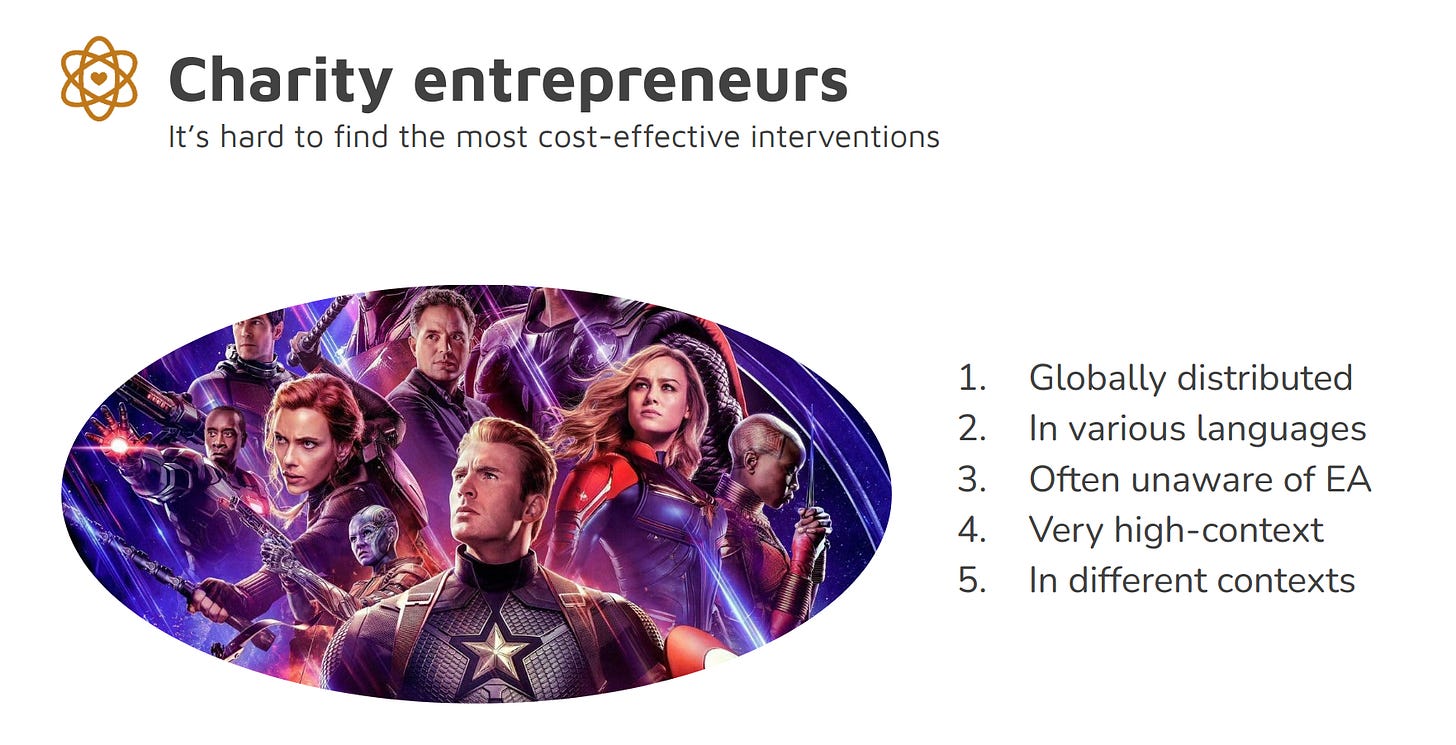
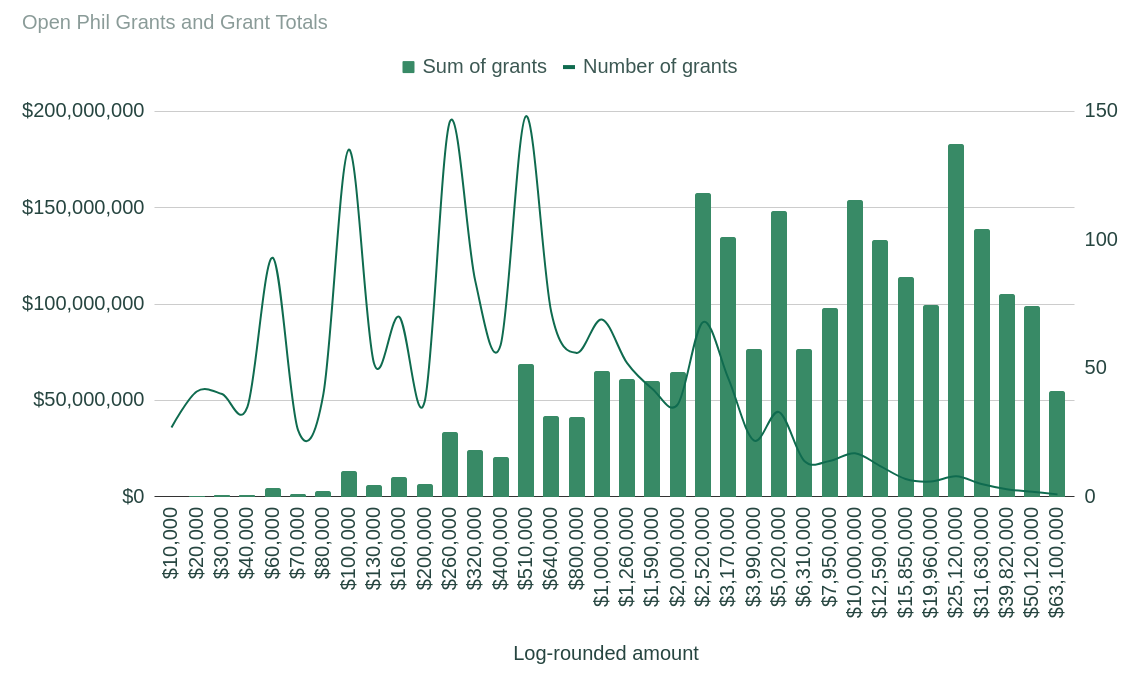
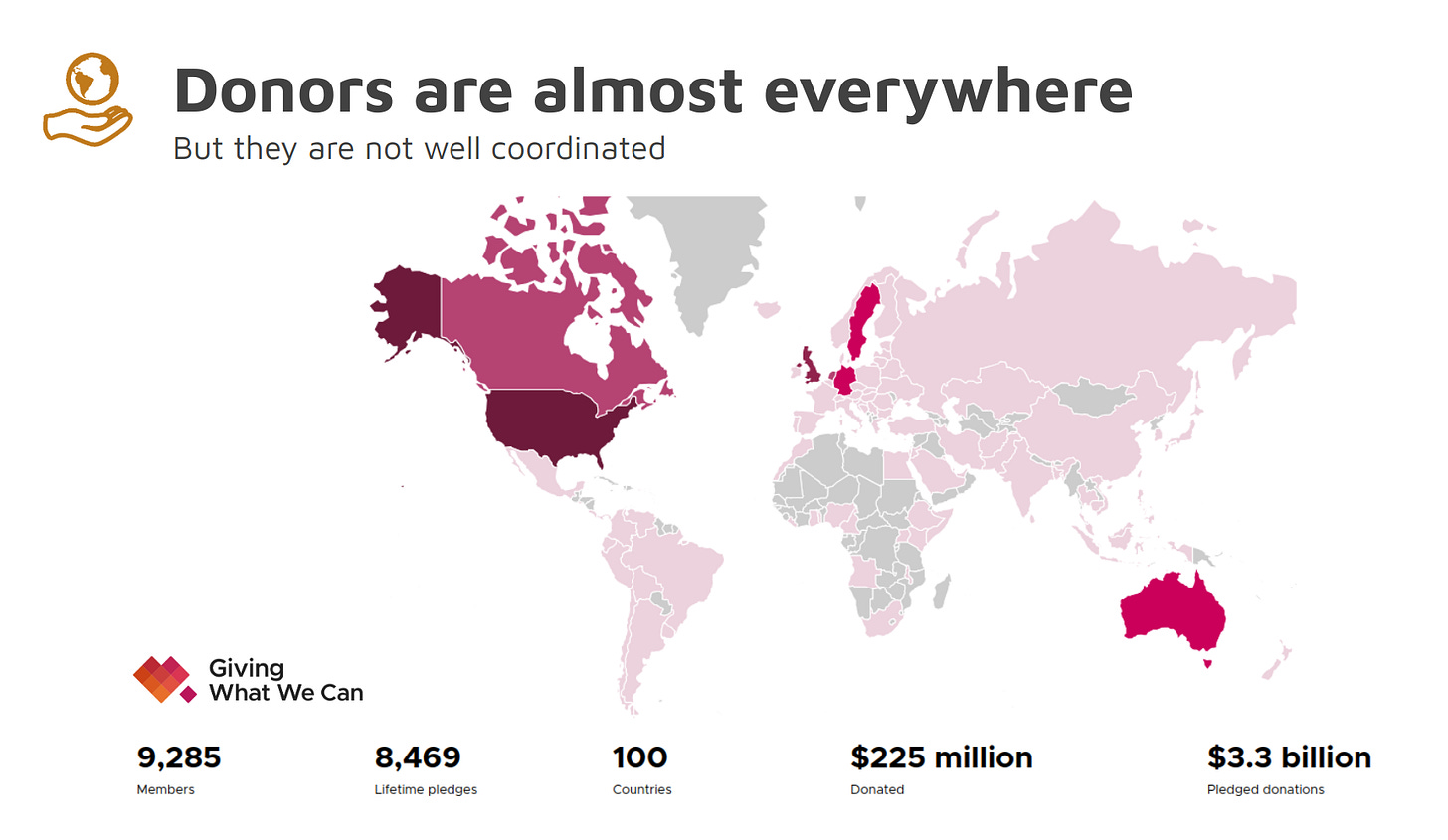
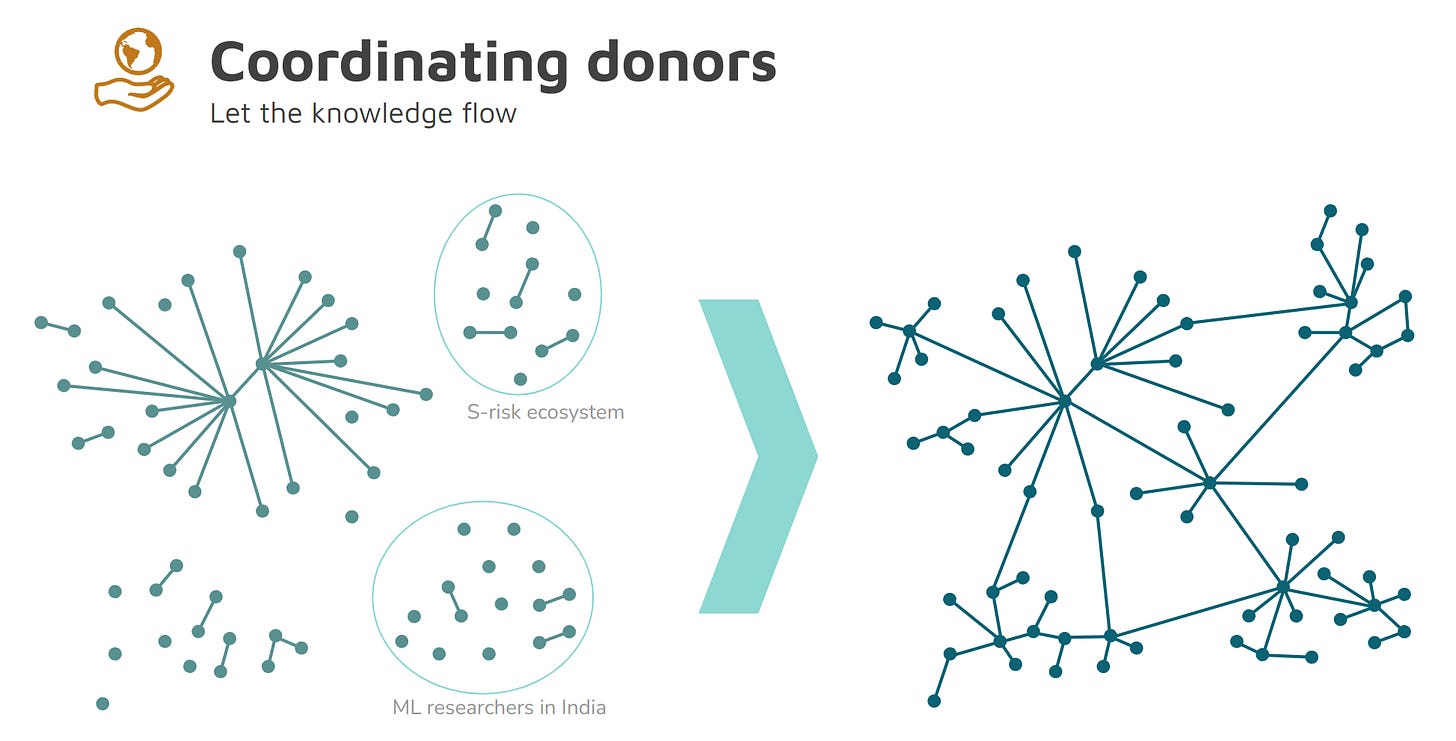
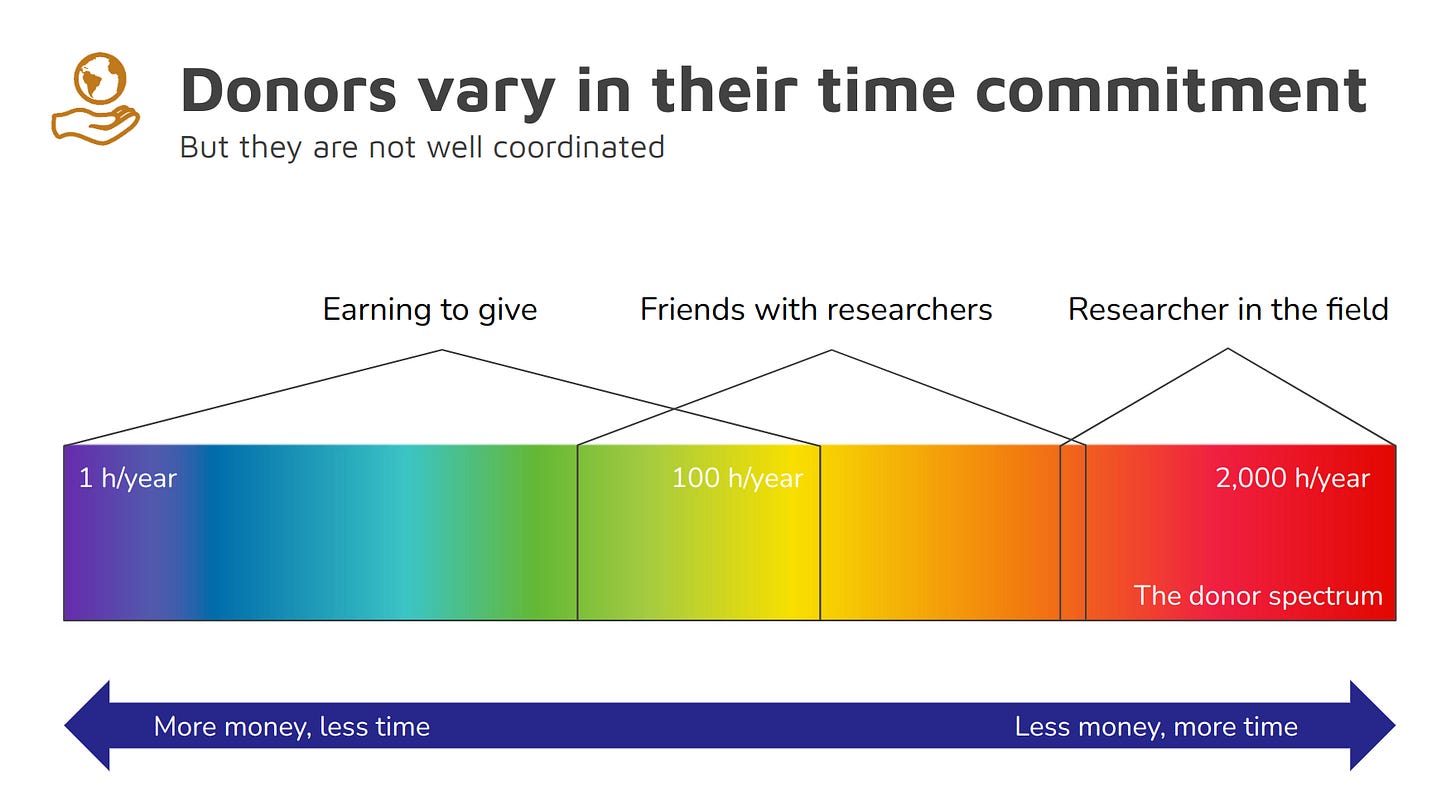
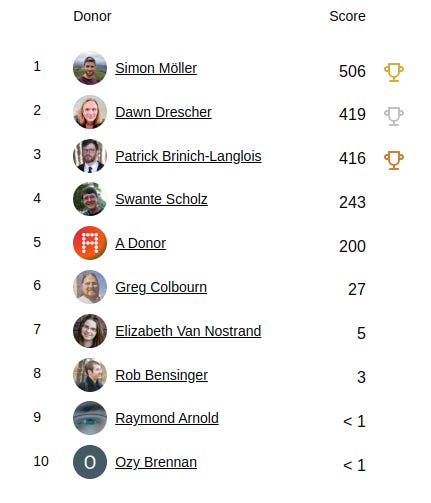
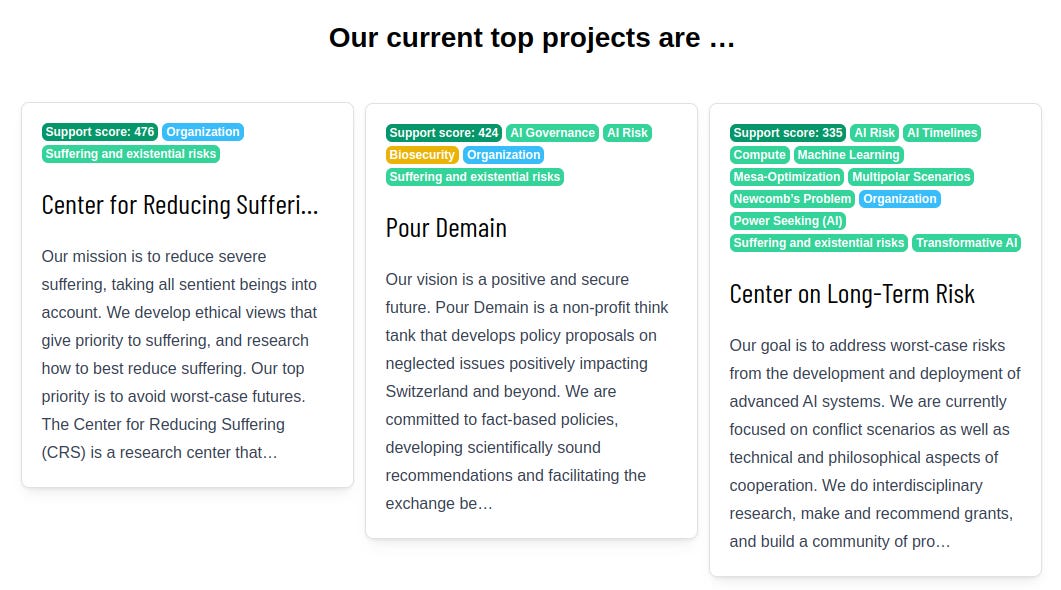
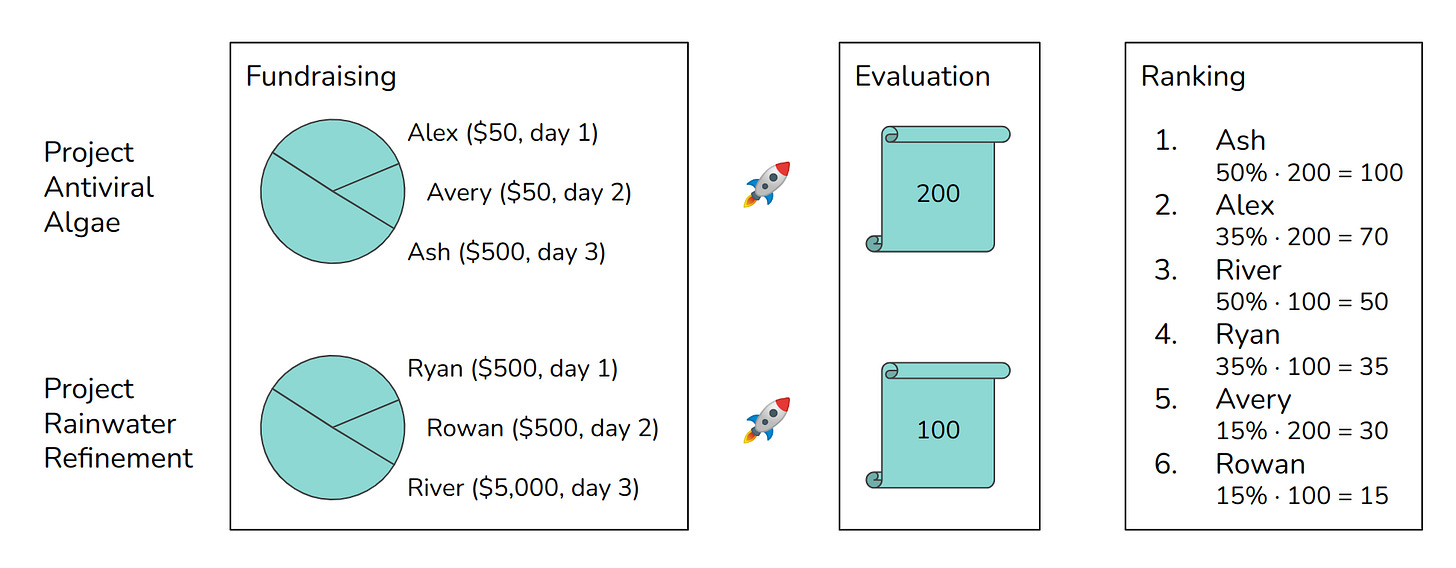
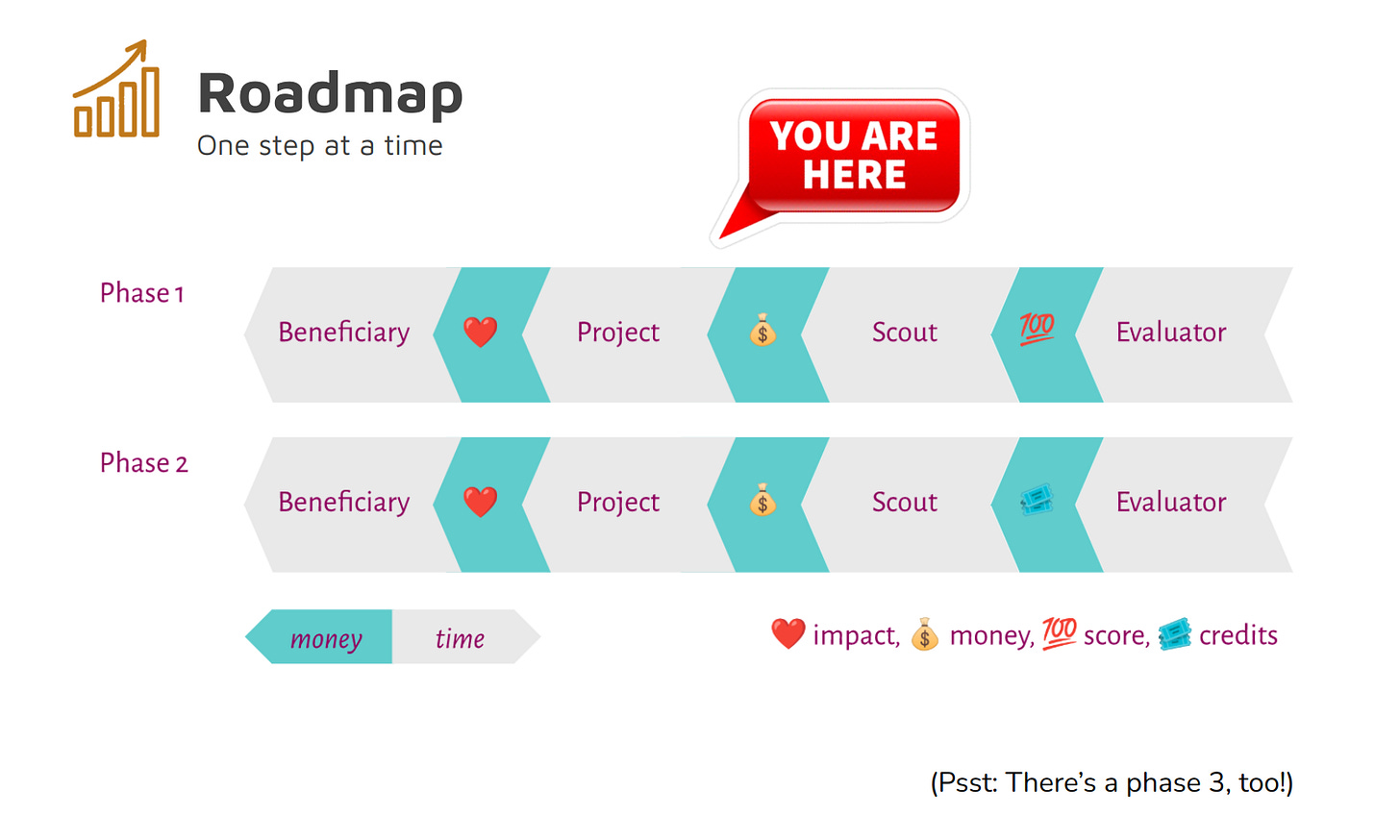
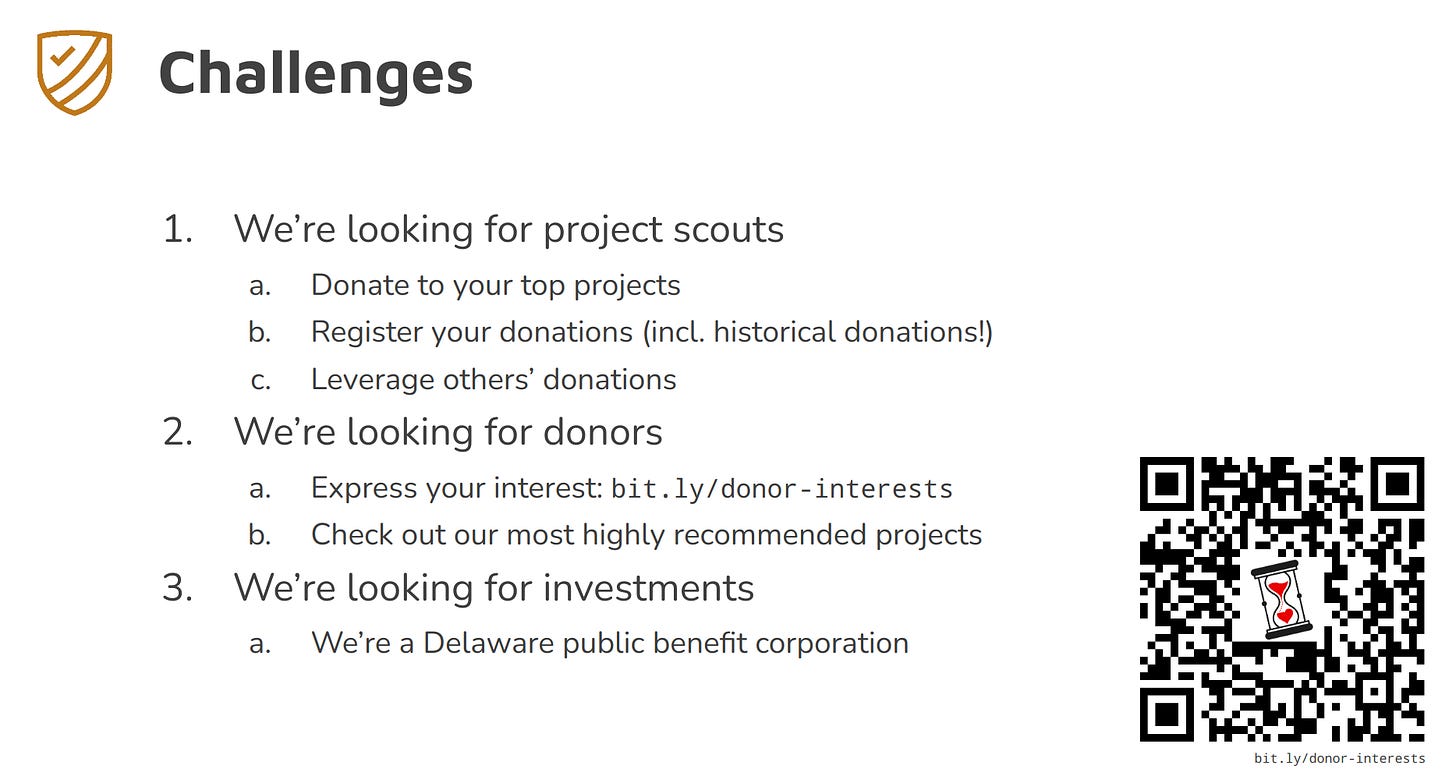
I'm surprised by the level of engagement. This seems to fill an obvious gap in the ecosystem and seems have a clear value proposition for a lot of potential stakeholders. Have you posted elsewhere, or used more direct outreach methods?
Yes, exactly! Yeah, I'm quite sad that it hasn't caught on.
I think there are just too few donors at the moment. That makes it hard for us to reach them because they're so few and far in between, and makes it easy for them to find plenty of great funding gaps among the projects they know so they never need to search for them.
We'll keep the platform running, so if AI safety goes mainstream or another billionaire funder pops up, we're ready to serve them with our recommendations.
I also imagine that it hasn't caught on is be because there is a lack of people just knowing it exists.
Have you considered cold-emailing people you that could plausibly find this valuable, for example finding potential people from a list such as this one?
Or sending out cold-emails and asking orgs such as these if you could have a quick keynote presentation for them (if there is potential EV) and having a Q&A in the end?
My intuition just tells me that this is an obviously valuable service for many, but, like many of these good SaaS products die, not because they aren't good, but because it doesn't reach a critical mass of users soon enough.
Yeah, we're not marketing people, so we've probably made plenty of subtle mistakes. But we have compiled a CRM of hundreds of leads from EA Hub, Donor Lottery, conferences, etc. and cold-emailed them; gone through charities to try to get in touch with their donors; posted in various grantmaker Slacks and Discords; posted in various AI safety groups; held talks at many EA and LW meetups, events, and conferences; networked in the refi space; tried to tap into our personal contacts to get in touch with grantmakers; ran a newsletter; produced an explainer video for those who don't like to read so much; etc. We also collabed with GWWC on a shoutout in their newsletter.
Over the course of a year I probably contacted some 500+ people and collected ~50 expressions of interest. But only 5 of them replied to our feedback survey, and none of those 5 ended up using the platform.
So while I imagine there are probably more than 50 donors in AI safety, it's probably not much more, perhaps double or they are all far away geographically and socially. I sourced the first 10+ just from my friends, which took a week or so. The rest trickled in very slowly one conference 1:1 at a time or with every 50th cold email. So 50 is probably already a good chunk of them. (Not all were interested in using the platform for their giving, but an aggregate donation budget of $700k of them was.) And they probably all had an easy time giving away their donation budget, so they never needed to look for more projects to give to.
Groups like StakeOut.AI want to do more mainstream outreach for AI safety. That could create a new source of users for us!